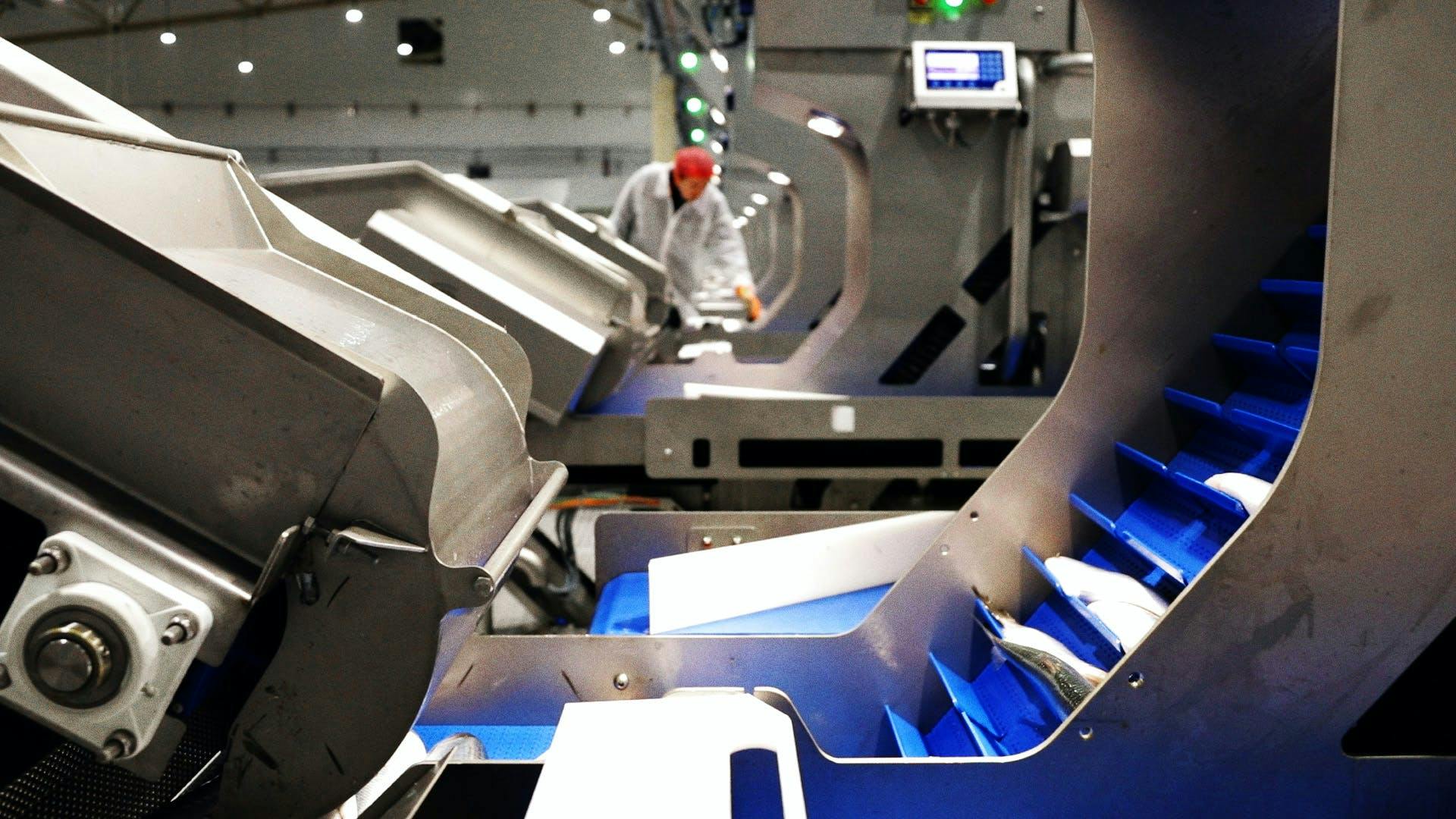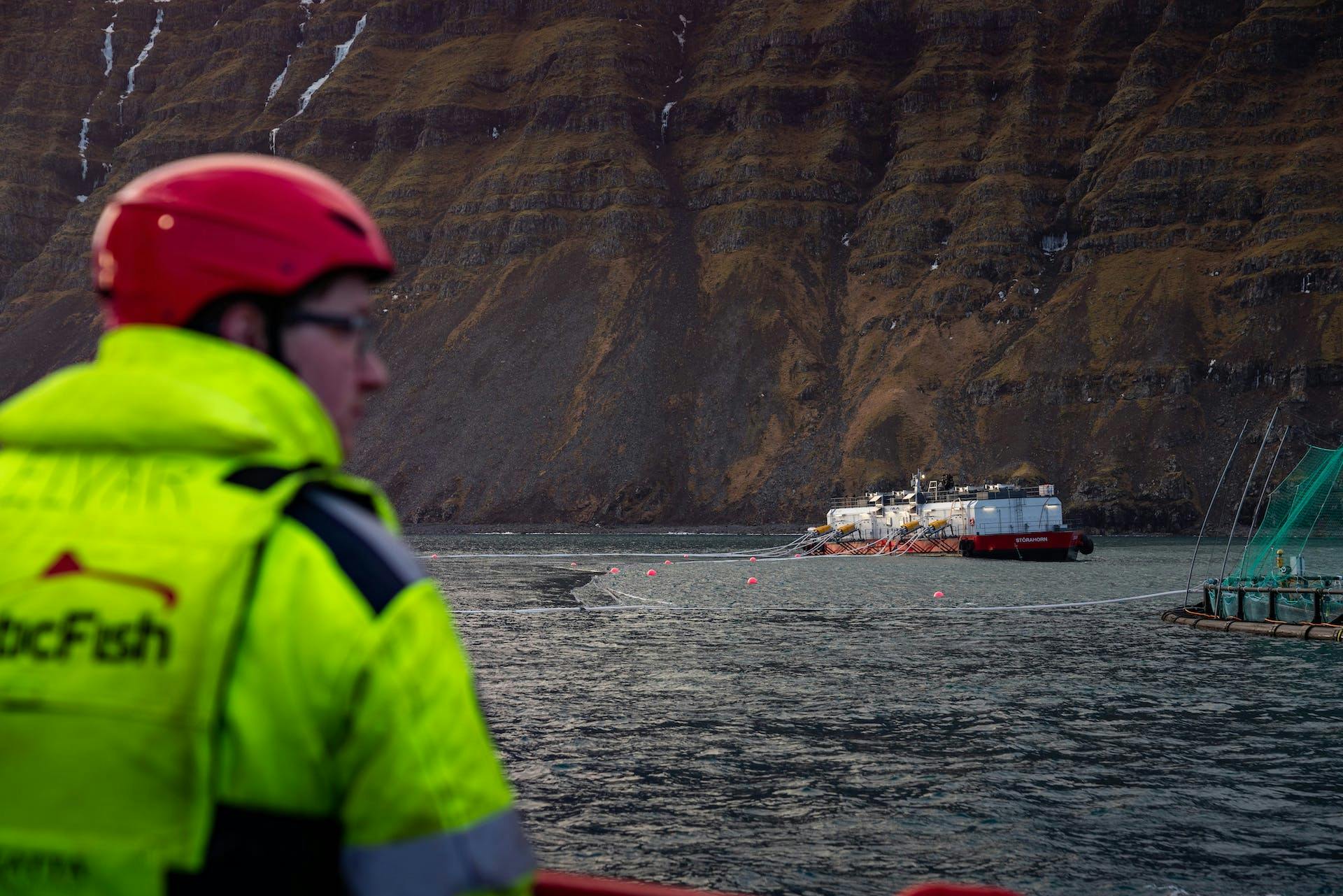Fish farming
Fish farming is one of the fastest growing industries in Iceland. Its main production is sea-based salmon farming in the Westfjords and the eastern part of Iceland. Rainbow trout is also farmed at sea and is once more a growing industry. Thanks to the use of geothermal water, Iceland is a worldwide leader when it comes to the farming of Arctic char, as well as Senegal flounder. Interestingly there are now plans to increase Iceland’s land-based production of salmon. Currently only one producer uses land-based facilities to produce salmon and has been the single biggest producer until now.
The first aquaculture experiments in Iceland began in the 1950s in small ponds and land-based tanks as well as the ocean farming of Atlantic salmon. As the price of salmon declined, however, the production proved too expensive and was eventually phased out. The revival of salmon production in Iceland started less than a decade ago. In 2016, it doubled, reaching more than 8 thousand tons. Production has since grown from year to year and is projected to exceed 40 thousand tons this year and 50 thousand tons next year.
This remarkable growth has yielded long-awaited benefits to the Icelandic community by generating increased export value for the economy, creating new jobs, not least in the more sparsely populated areas of the country, and fueling research and development. Fish farming is a knowledge-based industry, thus providing novel and exciting job opportunities in Iceland for future generations, as well as becoming an important pillar of the economy.
Fish farming in Iceland currently accounts for approximately 5% of Iceland’s export value for goods. Only a decade ago this value was only marginal, which illustrates the growth of this exciting knowledge-based industry.
According to government regulations, sea-based fish farming can only take place on the east and west coasts of Iceland. Other parts of the country are mainly closed to salmon farming to minimize potential adverse effects on the wild salmon stock.
Fish farming in Iceland is fundamentally science-based and determined by two fundamental factors defined by the Marine Research Institute (MRI) and implemented into law:
Carrying capacity: The MRI determines how much each fjord or area can carry of farmed biomass, without negative consequences. The current capacity is estimated to be around 144 thousand tons.
Risk assessment: The MRI determines how much salmon production is acceptable without posing too much of a risk of a genetic deterioration of the wild salmon populations. The current risk assessment model allows for 106 thousand tons of yearly production of sea-based salmon production in Iceland.
Salmon farming in Iceland is a dynamic and thriving industry, contributing to the local as well as national economy. Salmon is now the second most important seafood species from Iceland, in terms of export value; second only to cod which has always been by far the most valuable species.
New laws and regulations create the legal framework for fish farming based on a scientific approach. Information on the industry is readily accessible, and it is widely accepted that in the forthcoming years it will become an ever more important part of the Icelandic economy.


